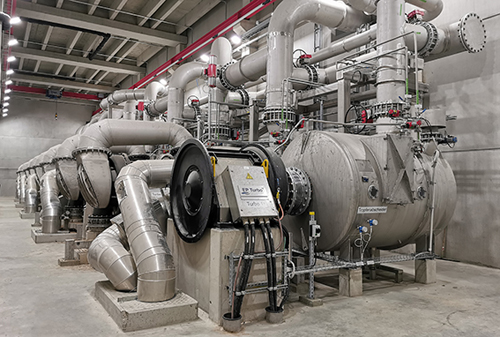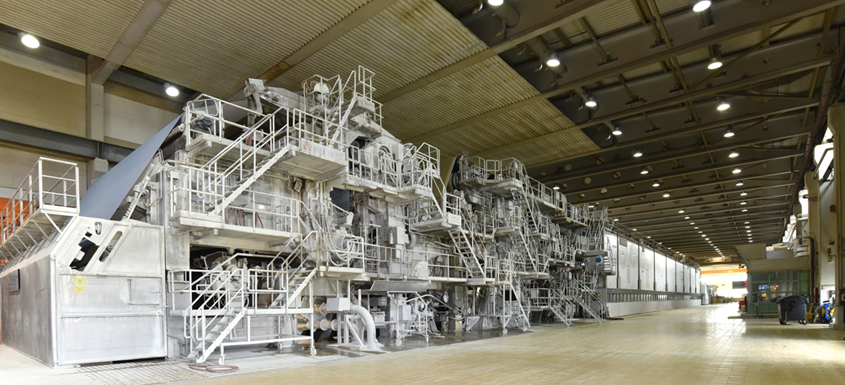5 simple tips
Say yes to lower energy consumption and costs
Today, every mill is looking for ways to save energy – not only to cut down costs but also to reduce its carbon footprint. We at Runtech Systems are happy to share with you some tips how to do it.
Using vacuum in various paper machine positions is expensive. In fact, vacuum is one of the top three energy consumers in a paper mill. By using vacuum only in the most critical positions, you can fully benefit from a more efficient nip dewatering strategy and save energy. And by measuring the water flow online accurately enables you to optimize vacuum levels and not overdo them.
Heat recovery provides another excellent way to save energy. Using recovered heat instead of primary energy sources, for example, to warm up shower waters or dryer hoods allows you to expect major cost savings.
By optimizing your papermaking process, you can save energy up to 30-70% as well as improve runnability and paper quality.
Take a look at our five tips!

Tip number 1:
Switch over from an LRP to an EP Turbo blower
Did you know that the EP Turbo blower is at least 15-30% more efficient than a new liquid ring pump (LRP)? And as a LRP wears down, this difference grows. In typical rebuild projects, 40-60% energy savings have been achieved.
Process optimization and lower energy consumption start with the EP Turbo blower. This completely water-free vacuum solution offers significant heat recovery potential for paper, board and tissue machines.
Mills have reported that vacuum system optimization with variable speed and capacity turbo blowers have saved them up to 2,000 kW.
However, to save energy maximally up to 30-70% takes more than just switching over from LRP’s to turbo blowers. You need other optimization measures, too. Read on to find out what they are.
Tip number 2:
Measure water flow to optimize vacuum levels
To save energy, it is essential to use the optimal vacuum level in the forming and press sections. Often paper mills use too high vacuum levels because they do not know the accurate water flow.
EcoFlow is the only reliable and accurate online dewatering measurement system for water that contains lot of air.
When you measure the water flow accurately, you can adjust the vacuum optimally and reach high energy efficiency.
Tip number 3:
Go for nip dewatering
There are some additional ways to ensure optimal vacuum levels and thus save energy. By using nip dewatering instead of uhle box dewatering, you get better profiles and improve dewatering without vacuum.
Here are some things to pay attention to:
- Felt moisture ratio has to be high enough.
- You need to have right type of felts.
- Roll covers need to have grooves instead of blind drillings.
- Well-functioning save-alls and doctors are a must to prevent rewetting. A doctor rebuild can reduce the need for vacuum by up to 50%.
- AirBlades are suitable for lower machine speeds.
Optimized doctoring and dewatering improve process performance and dryness after press, lowering the need for steam (1% dryness means 4% steam savings). This, in turn, results in electrical and steam energy savings.
Tip number 4:
Recover and reuse exhaust heat
The EP Turbo blower produces approximately from 5 to 20 m3 of exhaust heat per second. By recovering this 100–180°C heat, you will be able to lower steam consumption at your paper machine. Recovered exhaust heat can be used, for example, to warm up shower waters or dryer hoods.
Since steam is one of the most expensive components in papermaking, heat recovery will lead to significant cost savings.
Reusing exhaust heat boosts sustainability, too. Replacing primary energy sources by heat recovery reduces your carbon footprint as in many places steam is produced by combusting fossil fuels that cause CO2 emissions.
Take a look at these energy savings
o Uhle box vacuum: 15 kW/meter
o Drive power (uhle box friction): 7 kW/meter
o Increase in dryness (after press) 1-2% equals to 4-8% less steam
o At least 25%, typically 40- 60% electrical savings compared to LRP system
o Heat recovery energy savings rate: 80-200% of turbo system total power demand
o Water and cooling tower cost savings: 100,000 EUR/year
o Significant maintenance cost savings compared to LRP system
o Easy and fast maintenance of turbo blowers. Bearing exchange during felt change (8h). All maintenance can be done on site.
On average 2MW LRP system produces 3,500 tons of CO2 annually. With Runtech turbo rebuild you will also save 30-70% of these emissions.
Tip number 5:
Get in touch with Runtech Systems – Get an audit
Our tips have for certain aroused your interest in boosting the energy efficiency of your papermaking process and saving costs.
Want to know more? Get in touch with us to learn what our solutions can do in your mill.
We perform comprehensive on-site paper machine audits that enable the identification of production problems in the paper machine. We will give you valuable information and recommendations how to improve your process and decrease energy consumption
A Vacuum System Audit is a tool to document and benchmark the vacuum system and sheet dewatering effectiveness, to highlight problem areas and illustrate options to reduce operational cost associated with the vacuum system.
In a Desktop Vacuum Audit, based on the data template you complete, we can provide you energy-saving tips, benchmark your machine against similar ones and calculate energy saving potential and estimated ROI.
Engineered Solutions for Pulp and Paper Industry
Runtech Systems, an Ingersoll Rand brand, is a global provider of engineered systems tailored to the pulp and paper industries. Runtech works with customers to better understand and control their operational conditions to maximize efficiency and cost effectiveness.
Runtech’s patented solutions include energy efficient vacuum system and heat recovery optimization, runnability optimization, dewatering, doctoring and cleanliness optimization as well as ropeless tail threading, including related services, spare parts and paper machine audits and consulting.
Source: Runtech Systems













